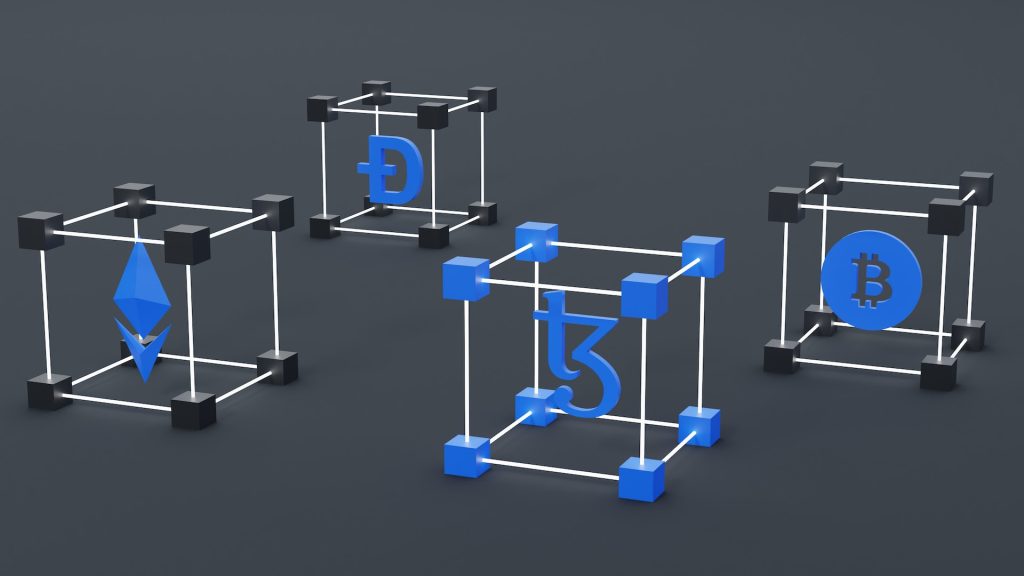In recent years, cryptocurrencies have taken the financial world by storm, and alongside the rise of digital currencies, crypto mining has gained significant attention. Cryptocurrency mining involves solving complex mathematical problems using computer hardware to validate and record transactions on a blockchain. Miners are rewarded with newly minted tokens for their efforts. With the allure of potential profits, many individuals and businesses are exploring the world of crypto mining. In this article, we will delve deep into the question: Is it profitable to invest in crypto mining?
Understanding Crypto Mining
Before we dive into the profitability aspect, it’s essential to understand how crypto mining works. Cryptocurrencies like Bitcoin and Ethereum operate on decentralized networks secured by a blockchain. Miners play a pivotal role in maintaining the integrity of these networks by validating and verifying transactions. In return for their efforts, miners receive cryptocurrency rewards, which serve as an incentive to continue the mining process.
Here’s a simplified overview of the crypto mining process:
Transaction Validation: Miners collect and verify transactions from users across the network. These transactions are grouped into blocks.
Proof of Work (PoW): Miners compete to solve complex mathematical puzzles as quickly as possible. The first miner to solve the puzzle broadcasts the solution to the network for verification.
Block Confirmation: Once a solution is verified, the block is added to the blockchain, and the miner is rewarded with a certain number of cryptocurrency tokens.
Mining Reward: In addition to the mining reward, miners may also earn transaction fees paid by users for faster processing.
Now that we have a basic understanding of crypto mining let’s examine the factors that determine its profitability.
Factors Affecting Crypto Mining Profitability
Mining Hardware: The type of mining hardware you use significantly impacts your profitability. Initially, miners used CPUs (central processing units) to mine cryptocurrencies. However, the industry has evolved, and today’s miners primarily use ASICs (Application-Specific Integrated Circuits) for Bitcoin and GPUs (Graphics Processing Units) for other cryptocurrencies. ASICs are highly efficient but expensive, while GPUs offer more versatility but consume more power.
Electricity Costs: Electricity consumption is a critical factor in crypto mining profitability. Mining rigs require a significant amount of power to operate continuously. The cost of electricity varies widely by location, and miners in regions with lower electricity rates have a competitive advantage.
Mining Difficulty: As more miners join the network, the difficulty of solving cryptographic puzzles increases. This means that it becomes harder and more time-consuming to mine new blocks, reducing the number of rewards miners receive.
Cryptocurrency Price: The market price of the cryptocurrency being mined directly affects profitability. When prices rise, miners earn more from each block they mine. Conversely, during bear markets, profitability can decrease significantly.
Hashrate: The hashrate of your mining equipment is a measure of its processing power. Higher hashrates increase your chances of successfully mining blocks and earning rewards.
Operating and Maintenance Costs: Mining equipment requires ongoing maintenance and occasional replacement, adding to the overall cost of mining operations.
Regulatory Environment: The legal and regulatory framework for cryptocurrencies and mining activities varies by country. Regulatory changes can impact the profitability of mining operations.
Profitability Over Time
The profitability of crypto mining is dynamic and subject to continuous changes due to the factors mentioned above. It’s crucial to consider both short-term and long-term perspectives when evaluating the potential returns on investment in mining.
Early Days of Bitcoin: In the early days of Bitcoin, when few miners were participating, it was possible for individuals to mine BTC using standard CPUs and achieve substantial rewards. However, as Bitcoin gained popularity and the network’s difficulty increased, mining became more resource-intensive, requiring specialized hardware.
Mining Pools: To address the increasing difficulty, miners began forming mining pools, where they combine their computational power to increase their chances of successfully mining blocks. Rewards are distributed among participants based on their contributions. Joining a mining pool can provide a steadier income stream for miners.
Bitcoin Halving: Bitcoin’s reward mechanism includes a halving event that occurs approximately every four years. During a halving, the number of new bitcoins created as mining rewards is cut in half. This event reduces the rate at which new bitcoins are introduced into circulation, affecting miner income. While halvings historically led to an increase in bitcoin’s market price, they also decreased the immediate profitability of mining.
Altcoins and Forks: Beyond Bitcoin, there are thousands of alternative cryptocurrencies (altcoins) that can be mined profitably with different hardware configurations. Additionally, some cryptocurrencies undergo forks, resulting in new coins being created. Miners who supported the original blockchain often receive free tokens from the fork.
Calculating Mining Profitability
To assess the profitability of a mining venture, miners need to consider several key metrics and perform calculations. Here are some of the essential calculations and factors to consider:
Revenue: Calculate your expected revenue by estimating the number of coins you can mine daily or monthly. This is influenced by factors like hashrate, mining pool rewards, and the current block reward.
Electricity Costs: Determine your electricity consumption in kWh and multiply it by your electricity rate to calculate your daily or monthly electricity expenses.
Hardware Costs: Include the initial cost of purchasing mining equipment, as well as ongoing maintenance and replacement expenses.
Pool Fees: Most mining pools charge a fee for their services, usually a percentage of your earnings. Factor this into your calculations.
Time Horizon: Decide on your investment horizon, whether it’s short-term or long-term, and consider the potential fluctuations in cryptocurrency prices.
Mining Difficulty: Monitor the network’s mining difficulty and adjust your expectations accordingly.
Break-Even Point: Calculate how long it will take to recoup your initial investment, factoring in all costs.
Profitability Threshold: Determine the minimum cryptocurrency price required for your mining operation to remain profitable.
Case Study: Bitcoin Mining
Let’s consider a simplified case study of Bitcoin mining to illustrate the calculations and profitability considerations. Please note that actual numbers can vary widely based on hardware, electricity costs, and other factors.
Assumptions:
Mining Hardware: Antminer S19 Pro (110 TH/s)
Electricity Cost: $0.10 per kWh
Pool Fee: 2%
Bitcoin Price: $50,000 (for simplicity)
Block Reward: 6.25 BTC (as of the last halving)
Calculations:
Daily Revenue:
Daily Revenue = (Hashrate / Network Hashrate) * Block Reward * (1 – Pool Fee)
Daily Revenue = (110 TH/s / 170 EH/s) * 6.25 BTC * (1 – 0.02) = 0.00403125 BTC
Daily Electricity Cost:
Daily Electricity Cost = Hashrate * Power Consumption * Electricity Cost
Daily Electricity Cost = 110 TH/s * 3250 W * $0.10/kWh = $8.75
Daily Profit:
Daily Profit = Daily Revenue – Daily Electricity Cost
Daily Profit = 0.00403125 BTC – $8.75 = -$8.74
In this simplified example, the daily mining operation results in a loss of $8.74 due to electricity costs exceeding the revenue generated. This calculation does not take into account hardware costs or fluctuations in Bitcoin’s price, which can significantly impact profitability.
Factors to Consider for Mining Profitability
Cryptocurrency Price Volatility: The cryptocurrency market is highly volatile, with prices subject to rapid and unpredictable changes. A sharp decline in prices can erode mining profitability or even render it unprofitable.
Hardware Lifecycle: Mining hardware has a finite lifespan, and its efficiency degrades over time. Miners should consider the need for regular equipment upgrades or replacements.
Geographic Location: The cost of electricity varies widely by region. Miners in areas with lower electricity rates can have a significant cost advantage.
Regulatory Environment: Legal and regulatory considerations can impact mining operations. It’s essential to stay informed about local and international regulations.
Market Conditions: Market sentiment and demand for cryptocurrencies can affect mining profitability. Bull markets may provide more favorable conditions for mining, while bear markets can be challenging.
Diversification: Some miners diversify their operations by mining multiple cryptocurrencies or participating in staking and yield farming to mitigate risk.
Long-Term vs. Short-Term: Deciding whether to mine for the long-term or take advantage of short-term market opportunities can impact profitability strategies.
The profitability of investing in crypto mining is a multifaceted and dynamic endeavor. It involves a careful consideration of hardware costs, electricity expenses, cryptocurrency prices, mining difficulty, and other factors. While mining can be profitable under the right conditions, it is not without risks and uncertainties.
Investors and miners must conduct thorough research, stay informed about market trends, and adapt their strategies to changing conditions. Furthermore, it’s essential to have a clear understanding of the associated costs and the potential for losses, especially during market downturns.
Crypto mining can be profitable for those who approach it with careful planning and the right resources. However, individuals and businesses should be prepared to navigate the challenges and uncertainties of the crypto mining landscape, making informed decisions to maximize their chances of success.






